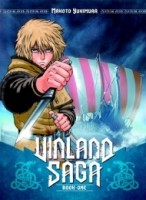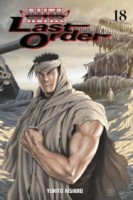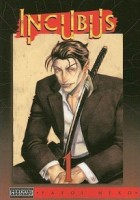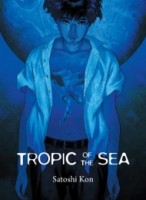 Creator: Makoto Yukimura
Creator: Makoto Yukimura
U.S. publisher: Kodansha
ISBN: 9781612624204
Released: October 2013
Original release: 2005
Awards: Japan Media Arts Award, Kodansha Manga Award
Makoto Yukimura’s Vinland Saga is a manga series that I have been hoping would be licensed in English for years. Understandably, I was thrilled when Kodansha Comics announced that it would be publishing the series. Not only that, Vinland Saga is Kodansha’s first foray into deluxe, hardcover manga. Kodansha’s edition of Vinland Saga uses a larger trim size than its other manga, contains color pages, and is being released in an omnibus format. The first volume of Kodansha’s Vinland Saga, published in 2013, collects the first two volumes in the original Japanese edition of the series, both of which were released in 2005. Vinland Saga is a critically acclaimed, award-winning manga. In 2009, Yukimura earned a Japan Media Arts award for the series. Even more recently, Vinland Saga won a Kodansha Manga Award in 2012. Even if Vinland Saga wasn’t already so well received, I would still want to read it. Yukimura is a the creator of Planetes, which I love, and I also happen to have a particular interest in Iceland among other things.
When he was only six years old, Thorfinn’s father was killed before his very eyes. Thors was a great man and a great warrior, but that was a life he tried to leave behind in order to live with his family in peace in a small Icelandic village. Thors’ past is inescapable and ultimately leads to his death, but in the process he is able to protect what is most dear to him. Even at such a young age Thorfinn vows to avenge his father. Ten years later he has grown into a hostile and stubborn young fighter serving under the very man who was responsible for his father’s death. Askeladd is a shrewd and cunning leader, his band of mercenaries willing to take on any job for the right price. Their battle prowess is fearsome, relying not only on their sheer strength and power but on underhanded strategies and their willingness to be utterly ruthless. Askeladd and his men may be uncouth, but they are also a terrible force to be reckoned with.
Vinland Saga is historical fiction and the series is inspired by actual events and people as well as by Norse sagas. The great adventurer Leif Ericson plays a significant role in the first omnibus of Vinland Saga and Thorfinn himself is loosely based on another explorer—Thorfinn Karlsefni. Considering that the manga deals with eleventh-century warfare and Vikings, a northern Germanic group of seafarers notorious for raiding and pillaging, it’s probably not too surprising that Vinland Saga can be rather violent. The battles in Vinland Saga are particularly well done. Some of the physical feats may be astounding or even slightly exaggerated—there are some very good reasons that Askeladd’s mercenaries are so feared—but the flow of the battles are very realistic as are the resulting deaths and injuries. Yukimura hasn’t forgotten the use and limitations of technology and tactics in Vinland Saga and they are appropriate for the era being portrayed. In general Yukimura’s action sequences are very exciting and leave quite an impression.
Vikings are often depicted as savage, bloodthirsty invaders in fiction but this portrayal misses some of the nuances and complexities of the historical reality. Yukimura notes in the afterword of the first volume of Vinland Saga that he wanted to show more than just a stereotypical representation of Vikings in his story. I think he is very successful in that. Much of Vinland Saga, Omnibus 1 focuses on brutal skirmishes, battles, and duels, but the development of Thorfinn and his family—particularly his father, but his mother and sister, too—as well as their Icelandic village and the other people who live there is also very important. The exceptional events surrounding the outbreak of war may be some of the major driving forces behind the story but the more mundane affairs of everyday life, such as the concerns over the changing weather and the coming winter and disputes over land for grazing, provide additional depth and realism to the series. I thoroughly enjoyed the first Vinland Saga omnibus and am looking forward to the release of the second.








